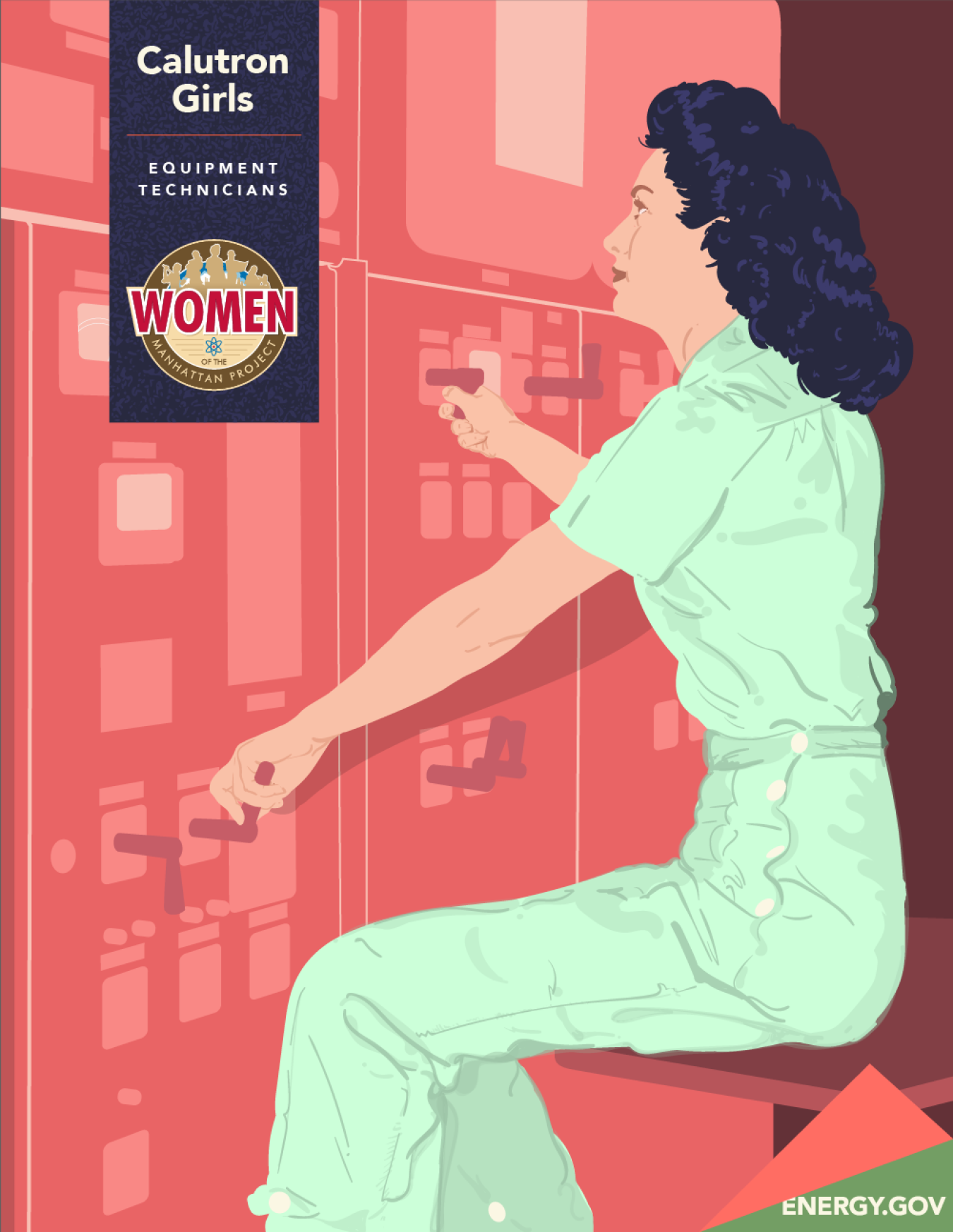The "Calutron Girls" are the final women of the Manhattan Project we're celebrating this year.
April 5, 2018
Cort Kreer, Energy Department.
"Calutron Girls" were young women hired to work at Y-12 at Oak Ridge National Laboratory. Many were just out of high school, and were tasked with monitoring the Calutron, which was the machine that separated enriched uranium isotopes.
Here are some more surprising facts about the "Calutron Girls":
- Most of these young women didn't know what they were working on. All they were told was that their work would be vital to the war effort.
- In a contest, Oak Ridge proved the young women were more effective at this task than a group of scientists. The scientists were too concerned with figuring out what had gone wrong, while the "Calutron Girls" would just alert their supervisors when there was an issue. They also proved to have a better touch when adjusting the dials than the scientists who were constantly fiddling with them.
- Oak Ridge, Tennessee, where the calutron was located is often called the "Secret City." It wasn't on any maps, but at the height of the war, 75,000 people lived and worked there. However, the culture of secrecy ran very deep. Letters were heavily censored and some calutron operators observed that when their colleagues asked too many questions, they were soon out of a job.
- Although the "Calutron Girls" were somewhat forgotten after the war, their story has been experiencing a recent renaissance. In 2013, Denise Kiernan wrote a book about them entitled, "The Girls of Atomic City." And this past February, they were immortalized in a novel by Janet Beard entitled "The Atomic City Girls."
- One of the "Calutron Girls," Ruth Huddleston, was interviewed for our Direct Current podcast last year. You can hear directly from Ruth and learn more about what it was like to work at Y-12 during the Manhattan Project in the episode titled "Ruth's Story." You can find it and other episodes at https//energy.gov/podcast/.
Allison Lantero
Allison Lantero served as Digital Content Specialist in the Office of Public Affairs. She cohosted the Department of Energy's flagship podcast, Direct Current. Before joining the DOE team, Allison worked at the Department of Transportation in Public Affairs.
In her spare time Allison enjoys listening to podcasts, trivia, and singing in a gospel choir. She hails from Chicago and is currently in search of a decent italian beef sandwich in D.C.

